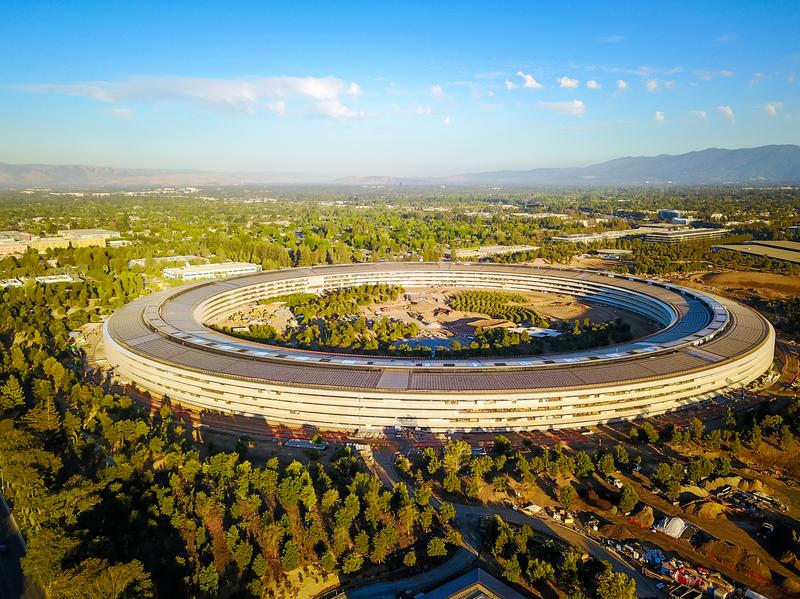Why your trendy office is bad for business
- 13 September, 2017 16:02

Across the nation, cubicles have been dismantled and office doors discarded to make space for Fussball tables, treadmill desks and foam-padded ‘pods’.
Open-plan is the new norm, and many of Australia’s biggest organisations are now adding Google-esque gimmicks to their divider-less dominions.
In April, professional services firm PwC opened its Sydney headquarters at Tower One, Barangaroo, where not even the CEO has an office (though there is a life-sized replica of a bull for some reason). The likes of Westpac, Swiss Re and KPMG have also taken up residence in new Barangaroo offices.
The Commonwealth Bank of Australia’s new base at Darling Square in Sydney was described to CIO Australia by one employee as a being like a “space centre”.

Cisco launched its new ANZ headquarters in February, covering three-floors of open-plan office space complete with exposed brickwork and ‘Scandinavian-style wood’.
It is now generally accepted that “tearing walls down” (as former CIO of the ASX Tim Thurman put it) will lead to greater collaboration and help nurture innovation.
But a growing body of research suggests otherwise. What’s more – shortly after the novelty of having a ‘sleeping space’ they’ll probably never use has worn off – employees are reporting negative impacts as a result of contemporary workspace trends.
Headphones on
An Oxford Economics survey from last year asked around 1,200 office workers globally what was most important to them about their work environment. The ability to focus and work without interruptions was the highest ranked response.
“Leadership at some companies may think employees only care about bean bag chairs and free burritos, but our survey shows that most people come to work to – well, work,” the report’s authors said.
More than half of employees responding to the survey said ambient noise reduces their satisfaction at work. Nearly two thirds said blocking out distractions increased their productivity. Despite this, only 39 per cent of executives said ambient noise affects their employees’ productivity.
The findings support a 2013 University of Sydney study which involved analysis a decade’s worth of employee surveys. Nearly half of people with a completely open office floorplan, and nearly 60 per cent of people in cubicles with low walls, reported being dissatisfied with their sound privacy. Only 16 per cent of people in private offices said the same.
And it’s not just noise. There is also the peril of getting stuck with ‘chatty open plan office guy’…
And if you thought millennials were more at peace in the hubbub: according to the Oxford Economics report the age group is actually more likely to say noise distracts them from work, and in general are more annoyed by ambient noise in the office.
Here, there, any chair
Activity-based working encourages employees to seek out a workspace more suitable for the task at hand. To get around the open-plan noise issue, many new office layouts now include a variety of different environments suited to different types of work.
Cisco splits its ANZ HQ floors into ‘hoods’, for example. The office is “filled with different types of communal spaces where staff sit down and chat to new people, as well as soundproofed, pod chairs and small private rooms where they can work alone”, the company said.
KPMG’s office space provides ‘focus zones’ and ‘casual connect areas’, Swiss Re has ‘think tank rooms’, and at Westpac staff ‘move around the space according to the activity’. In most cases, ‘camping out’ in a meeting room or quiet booth all day is discouraged.
With activity-based working comes hot-desking. The concept being employees turn up for work and find a free desk. That’s good for businesses as they can make huge savings on leasing space and generate goodwill by encouraging some staff to work flexibly.
“We wanted to apply an ‘Uber’ like approach to office resources,” Cisco ANZ vice president, Ken Boal said at the time.
For staff, however, it usually means arriving early to grab a spot and having to reintroduce yourself to new faces every day.
Or worse. A study by researchers at Auckland University of Technology, published in Applied Ergonomics in April, found hot-desking workers found they were more distracted and distrustful of their colleagues. The evidence suggested “co-worker friendships were not improved and perceptions of supervisory support decreased”.
The way you set-up your office can even see you hauled in front of the Fair Work Commission. Last month the Australian Services Union announced it was taking the Australian Taxation Office to the commission to protest against a plan to extend a hot-desking trial in Melbourne.
The union called it ‘dehumanising’ for workers. “It has a terrible reputation because it was designed to save accommodation costs for employers. It was not designed to provide an improved working environment for staff,” the union said in a statement.

Even giants like Apple can suffer from employee backlash to open-plan ideals. According to rumours, a number of workers might quit such is their disgust about the design of the new Apple Park campus complex in Cupertino, California. Others have demanded their own separate buildings – with private offices – off to the side.
As Johnny Srouji, Apple's senior vice president of hardware technologies, reportedly reacted to the campus floorplans: "f*** this, my team isn't working like this".

